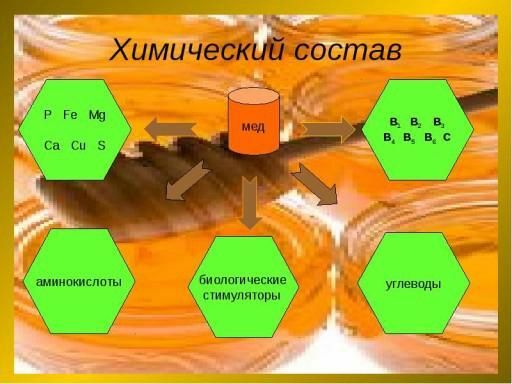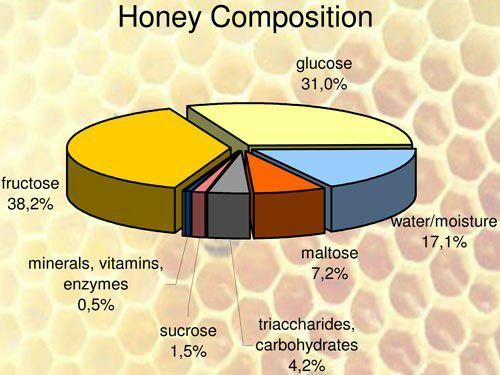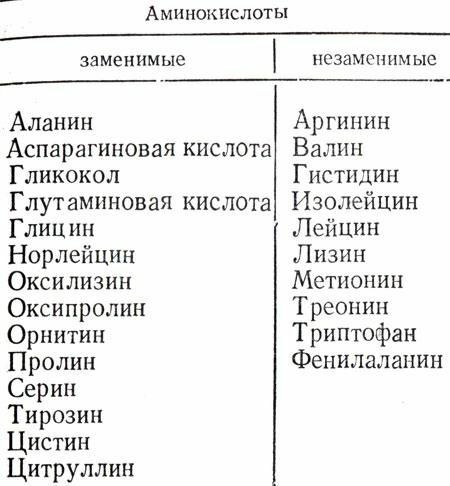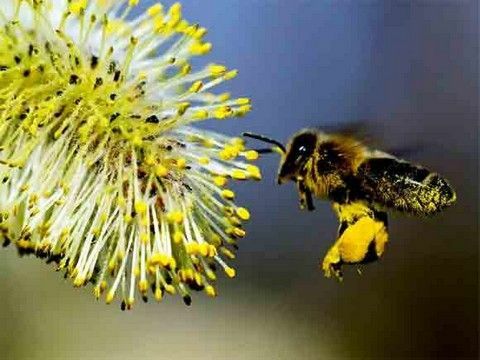- Chemical Composition
- What else is in honey?
Everyone knows that honey is an almost universal remedy for most diseases. It strengthens the immune system and helps to destroy pathogens, but it is unlikely that many suspect how truly the composition of honey is.

Chemical Composition
In various varieties of the sweet, natural medicinal product, many hundreds of up to 455 different compounds are contained. Honey is about 20% water, with the remainder being dry substances. Of these, ¾ consists of monosaccharides - glucose and fructose. In addition, carbohydrates such as sucrose and maltose are found in bees nectar, the percentage of which is determined by the type of pollen used by insects to produce honey.
Important: no matter how high the concentration of sucrose in honey was initially, when it ripens it drops sharply to almost 0. And on the contrary, the mature product contains much more maltose than the young one. Therefore, it is the ripe honey that is most useful and most easily absorbed.
In each grade, the ratio of carbohydrates is different. It depends on it, how much the product will be liquid. Glucose, in contrast to fructose, eventually crystallizes. This explains why honey is liquid first, and then thickens. At the same time, varieties with a high content of fructose, for example, acacia and kiprejny, long remain liquid, which is their characteristic feature. Also slow down the process of crystallization of honey contained in it dextrins. In flower varieties, they are no more than 2%, and in paddy varieties - closer to 5%.
Moisture of honey depends on many factors, including:
- time of collection of nectar;
- features climatic conditions during the collection;
- product maturity;
- storage conditions and type of used packaging;
- ratio of sugars.
Attention! Moisture of honey is one of the most important indicators of its quality, so with an increased water content favorable conditions are created for the multiplication of microorganisms and activation of fermentation processes.
In addition to water and sugars, the chemical composition of honey is represented by the following compounds:
- nitrogenous substances:
- protein;
- is non-protein.
- acid;
- mineral substances;
- colorants;
- vitamins;
- flavorings.

Nitrided substances
The presence of honey in this kind of compounds is due to the fact that its production is carried out by the enzymes of the saliva of bees. In addition, nitrogenous substances are present in the pollen, so their content in different types of honey is also not the same.
Nitrogenous substances are represented by protein and non-protein compounds. On the average, the share of the former is 0,08-0,4%, although in buckwheat and heath variety their concentration can reach 1%, and up to 1,9% in padevom. Protein nitrogenous compounds are mainly represented by enzymes, which are a kind of catalyst for the processes of decomposition and synthesis, which proceed steadily in honey. These are:
- amylase( diastase);
- catalase;
- invertase;
- peroxidase;
- glucose oxidase;
- inula;
- phospholipase;
- glycogenase, etc.
Each enzyme is involved in only one type of chemical reactions. And after their completion, they are allocated in an unchanged form, which allows us to call them catalysts.
Attention! By diastase activity, you can determine how old the honey is and whether it has not been heated. In poor-quality products, its indices are significantly reduced or completely equal to 0.
As for non-protein nitrogen compounds, their content in honey is usually quite low - from 0.6 to 500 mg per every 100 g of product. By chemical origin, they are mainly interchangeable and, importantly, essential amino acids, the set of which directly depends on the type of pollen, the conditions of honey gathering and the processing of nectar. Nevertheless, honey of any kind includes:
- arginine;
- alanine;
- glutamic acid;
- lysine;
- threonine;
- phenylalanine;
- valine;
- leucine;
- tyrosine;
- aspartic acid.
Only in some varieties are found:
- methionine;
- proline;
- histidine;
- tryptophan and some other amino acids.

At the same time, honey contains such non-protein nitrogenous compounds as alkaloids. These substances in low concentrations can act as medicines, which explains their use in medicine, but in high doses they are the strongest poisons. Honey with a high concentration of alkaloids is called drunk, its bees are harvested from rosemary, marsh heather, azalea, rhododendron, Mediterranean laurel, etc. With the use of such honey, a person falls into a state similar to alcoholic intoxication. He has dizziness, nausea, coordination disorder, headache, difficulty breathing, cold sweat. These symptoms can persist for several hours.
Acids
The composition of honey necessarily includes inorganic( 0.03%) and organic( 0.3%) acids. They can be represented both in the form of ethers, and in the free state, which is determined by the hydrogen index - the pH of honey. Usually honey is found:
- gluconic;
- is a dairy;
- apple;
- formic;
- is lemon;
- phosphoric;
- hydrochloric;
- linoleic;
- amber;
- is oxalic;
- wine;
- linolenic acid.
Since the content of organic acids in honey is much higher than that of inorganic acids, it is they who tell the characteristic sourness, aroma, and also bactericidal properties of the product. Also, due to the presence of acids, the vitamins contained in the product can persist for a long time.
Usually flower honey varieties have a lower pH - from 3.5 to 4.1, except for the lime one. For him, the pH is 4.5-7.Approach to neutral pH values and species varieties, which is associated with a high concentration of minerals in them. Their hydrogen index can range from 3.95 to 5.15.
Warning! The acidity of honey is usually expressed in milliliters of sodium hydroxide, left for titration of 100 g of product. Therefore, in different cases it is 0.23-6.16 ml.
Mineral substances
According to the content of macro- and microelements, honey has no equal, as there are up to 40 species in it, each variety having its own unique set of minerals. What is especially important is that the ratio of some minerals in honey is similar to the normal composition of human blood, so this product is easily absorbed by the body. Thus, it contains:
- phosphorus;
- calcium;
- potassium;
- sulfur;
- sodium;
- chlorine;
- magnesium;
- iron;
- copper;
- iodine;
- manganese;
- aluminum;
- nickel;
- fluoro;
- cobalt;
- zinc, etc.
Important: Dark varieties are more rich in minerals than light ones. Honey with the highest ash content( mineral salts content) is coniferous.
Colorants
It's no secret that different types of honey differ in color. To some extent, this depends on the composition of amino acids, but the coloring matter contained in it also corresponds to the coloring of the most popular beekeeping product. They are mainly represented by chlorophyll, carotene, xanthophyll, tannin and anthocyanins. That is why honey can have not only a characteristic yellow or brown color, but also greenish.

Nevertheless, during storage, honey can change its color, since it eventually grows the number of melanoidins, giving it a dark brown color. These substances are formed when the product is heated.
Vitamins
Honey contains a lot of vitamins, but their concentrations are scanty, although with acids they last very long. Vitamins enter honey from pollen and nectar, so their collection depends on the type of honey, and the number depends on the number of pollen grains. As a rule, the product contains vitamins:
- of group B: B1, B2, B5, B6;
- H;
- PP;
- E;
- C.
Aromatic substances
Aromatic are compounds having a benzene ring. They are not without reason received such a name, since most of them have a characteristic smell. Scientists managed to find in honey more than 200 substances of this kind. They are mainly represented by aldehydes, alcohols, ketones, esters and acids.
It is the set of aromatic substances that determines the smell of a particular variety, so the fragrance of lime, buckwheat honey, etc.can not be confused with any other. In this case, some varieties are characterized by a rather unpleasant smell, for example, tobacco or goldfish. But aromatic substances are mostly lightly volatile, so when stored, honey loses its flavor. Also the smell disappears or gets unpleasant notes when heated.
And what else is there in honey?
Although honey is famous for its antibacterial properties, it always has a special microflora, namely fungi and osmophilic yeast. As a rule, their number is small, but if the rules of storage are not observed, the number of microorganisms can significantly exceed the norm.
Important: the upper layers of honey can contain bacteria.

As mentioned above, in the bee delicacy there is always a flower pollen. But this is more a virtue than a disadvantage, since it acts as a source of amino acids, proteins, vitamins and minerals. And in any honey contains not one kind of pollen. This and its number depend on what kind of flowers bees collect nectar, their structures, grain sizes, bee breeds and even the characteristics of a particular bee family.
Thus, the composition of honey determines its properties. So, the sphere of use, so to speak, the indications for use, directly depends on the grade of this tasty medicine and its maturity.
